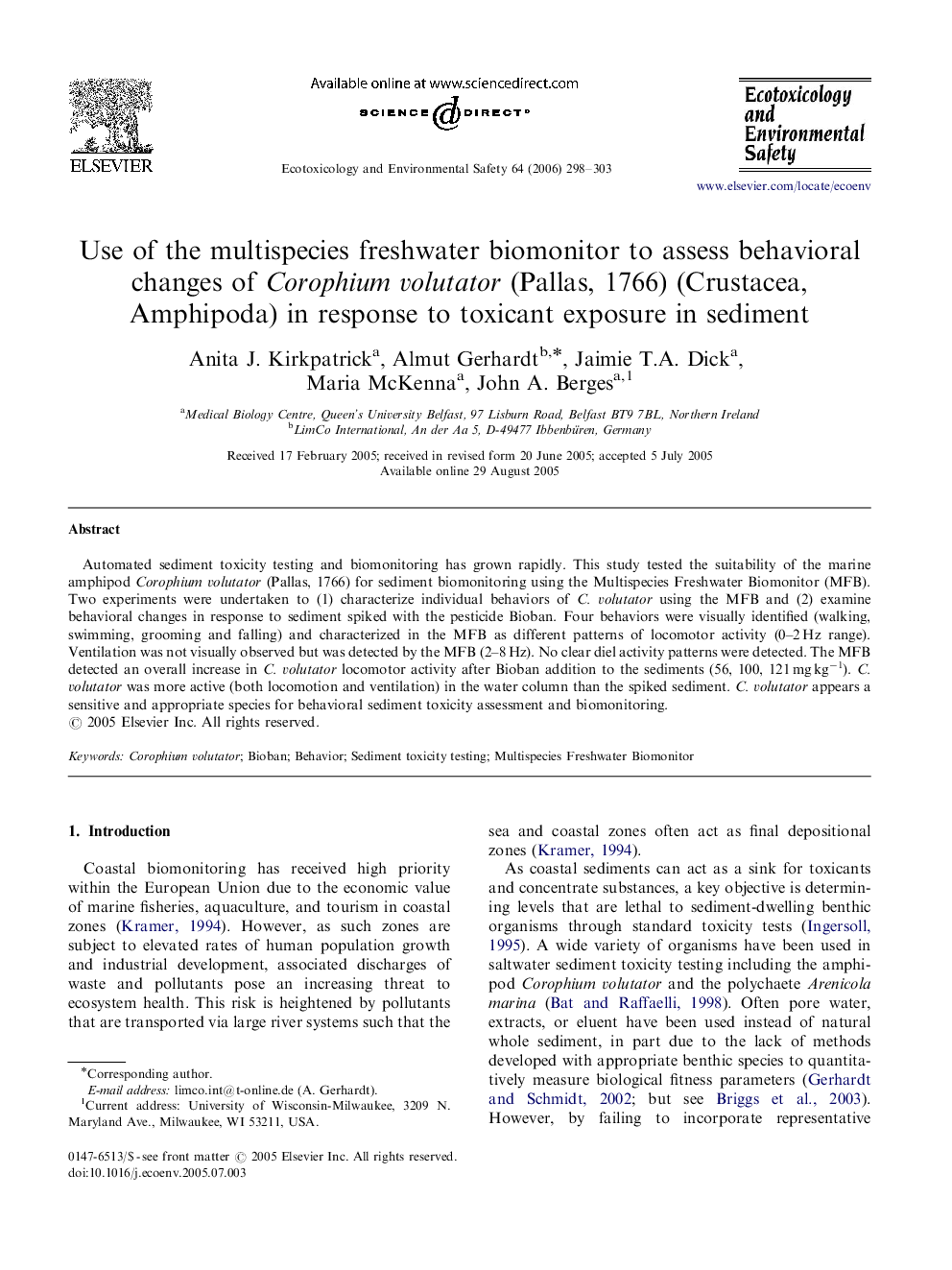| Article ID | Journal | Published Year | Pages | File Type |
|---|---|---|---|---|
| 4422569 | Ecotoxicology and Environmental Safety | 2006 | 6 Pages |
Automated sediment toxicity testing and biomonitoring has grown rapidly. This study tested the suitability of the marine amphipod Corophium volutator (Pallas, 1766) for sediment biomonitoring using the Multispecies Freshwater Biomonitor (MFB). Two experiments were undertaken to (1) characterize individual behaviors of C. volutator using the MFB and (2) examine behavioral changes in response to sediment spiked with the pesticide Bioban. Four behaviors were visually identified (walking, swimming, grooming and falling) and characterized in the MFB as different patterns of locomotor activity (0–2 Hz range). Ventilation was not visually observed but was detected by the MFB (2–8 Hz). No clear diel activity patterns were detected. The MFB detected an overall increase in C. volutator locomotor activity after Bioban addition to the sediments (56, 100, 121 mg kg−1). C. volutator was more active (both locomotion and ventilation) in the water column than the spiked sediment. C. volutator appears a sensitive and appropriate species for behavioral sediment toxicity assessment and biomonitoring.
